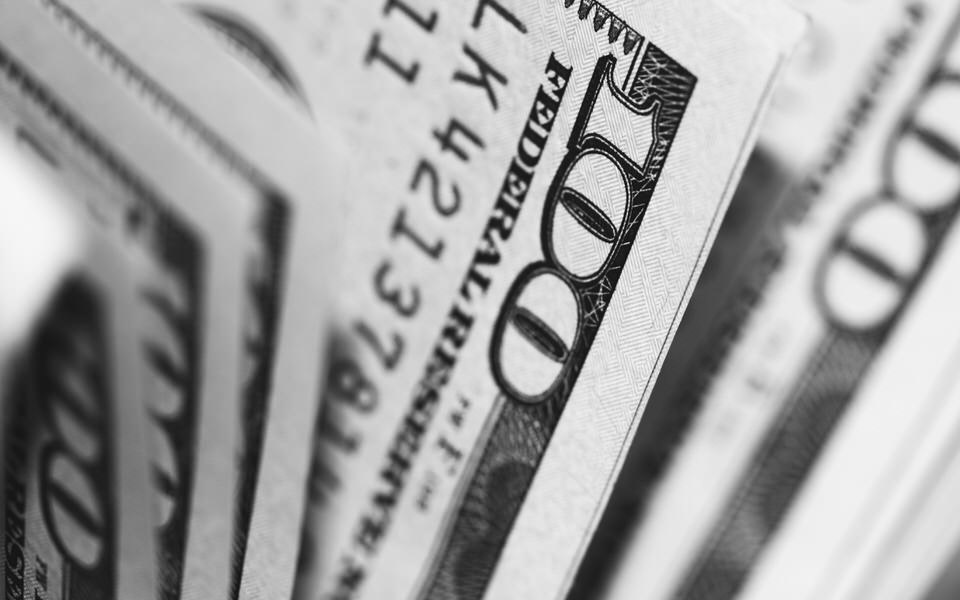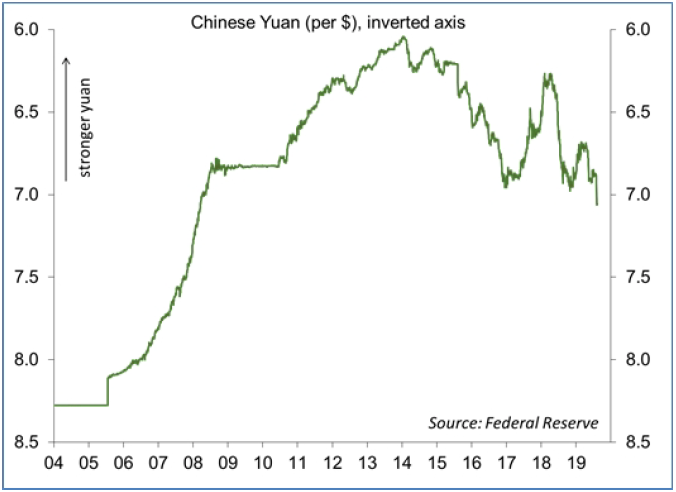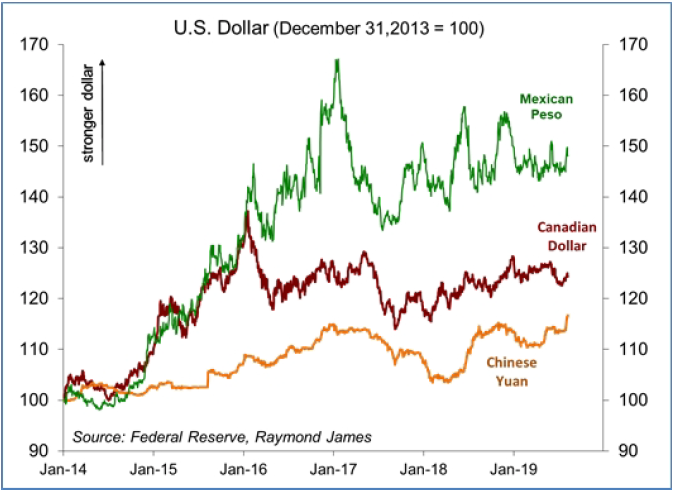by Scott Brown, Ph. D., Chief Economist, Raymond James
Chief Economist Scott Brown discusses current economic conditions.
On August 5, China allowed its currency, the yuan, to depreciate against the U.S. dollar. It wasn’t a particularly large move, a little more than 1.5%, but it breached 7 yuan per $ -- a level seen as “psychologically important.” More importantly, the move ignited concerns of a possible currency war and the Treasury Department responded by formally declaring China to be a currency manipulator. The irony here is that U.S. trade policy has put downward pressure on the yuan and China has been working to prevent the currency from weakening further. This seems unlikely to develop into a currency war – that is, unless we see the two major economies of the world facture apart completely.
First, a little background. During the Asian financial crisis of 1997, country after country saw their currency come under pressure. Global investors’ efforts to pull money out pushed the currency lower, creating more incentive to pull money out, generating a downward spiral. IMF bailouts helped to stabilize the situation, but these came with a cost, typically higher interest rates to keep the currency from appreciating – and higher interest rates were a negative for growth. The lesson for these countries was that you should build up enough reserves to be able to defend the currency when under pressure. That happened country by country, but increasing reserves was a much bigger deal for China given the size of its economy.
To be clear, there is an important distinction between routine currency market intervention (selling yuan to buy U.S. dollars) to stabilize the exchange rate and outright manipulation to keep your currency weak in order to fuel export growth. China’s trade surplus ballooned to 10% of its GDP in 2007, partly reflecting a changing economy (greater efficiencies in production and distribution), but also because the currency was artificially weak. The country’s forex reserves surged to $2 trillion by 2009 and then doubled again (to $4 trillion) by 2014.
China maintained a peg to the U.S. dollar until 2005, when it shifted its reference to a basket of currencies (of which the U.S. dollar is the largest share). Despite China’s efforts to weaken its currency, the yuan appreciated against the dollar until 2013. Since then, the forces have shifted. In recent years, China has run down its reserves (to $3.1 trillion in July), to keep its currency from weakening. It has also put in place capital controls to limit outflows (which further weaken the currency).
Twice a year, The Treasury Department publishes a report on currency issues, but it refrained from formally declaring China a currency manipulator during the period when China was actively trying to weaken its currency. Why? Because doing so would, by law, automatically set in motion tariffs – and as everybody (or mostly everybody) knows, tariffs would add to costs for U.S. consumers and businesses, invite retaliation against U.S. exports, disrupt supply chains, and destabilize the global economy (basically, everything we’re seeing now). Neither side wins in a trade war. It is not a zero-sum game. President Trump’s trade policies have put even more downward pressure on the yuan. China has allowed its currency to weaken, but by much less the free market would. Labeling China as a currency manipulator, at this point, is futile. No need to fear starting a trade war. We’re already in one. It’s important to keep things in perspective. Since 2013, the dollar has appreciated more against our other major trading partners.
China does face a difficulty in not letting its currency weaken too rapidly. The whole point of having currency reserves is to help keep exchange rates relatively stable. A weaker currency will offset much of the impact of the latest round of tariffs (10% on the remaining $300 billion in Chinese goods set for September 1) and a larger move would help to offset the impact of previous tariffs. However, it’s not in China’s interest to do too much.
President Trump has tried to pull the Fed into a currency war. Exchange rates can be thought of as a price, determined largely by supply and demand. The dollar moves to balance trade and capital flows. In the short-term, central bank policy is the dominant factor. The Federal Reserve has been tighter than other central banks, contributing to the dollar’s strengthening. Easier policy (rate cuts) would put some downward pressure on the dollar (all else equal). However, exchange rate policy is not the Fed’s responsibility. Treasury speaks for the dollar. The Fed may intervene in the currency markets, but only on behalf of the Treasury. Moreover, while Treasury intervention in the currency market might have some short- term impact, mostly psychological, its ability to move the market on a sustained basis is tiny in comparison to the massive amount of daily currency market flows.
China’s move last week was not particularly large, and the country has no incentive to weaken it sharply. However, the trade conflict has no end in sight and there’s a danger that the Chinese and U.S. economies will split further apart. Needless to say, last week’s forex developments have added more uncertainty for the financial markets and were further destabilizing to the global growth outlook.
The opinions offered by Dr. Brown should be considered a part of your overall decision-making process. For more information about this report – to discuss how this outlook may affect your personal situation and/or to learn how this insight may be incorporated into your investment strategy – please contact your financial advisor or use the convenient Office Locator to find our office(s) nearest you today.
All expressions of opinion reflect the judgment of the Research Department of Raymond James & Associates (RJA) at this date and are subject to change. Information has been obtained from sources considered reliable, but we do not guarantee that the foregoing report is accurate or complete. Other departments of RJA may have information which is not available to the Research Department about companies mentioned in this report. RJA or its affiliates may execute transactions in the securities mentioned in this report which may not be consistent with the report's conclusions. RJA may perform investment banking or other services for, or solicit investment banking business from, any company mentioned in this report. For institutional clients of the European Economic Area (EEA): This document (and any attachments or exhibits hereto) is intended only for EEA Institutional Clients or others to whom it may lawfully be submitted. There is no assurance that any of the trends mentioned will continue in the future. Past performance is not indicative of future results.
Copyright © Raymond James

















